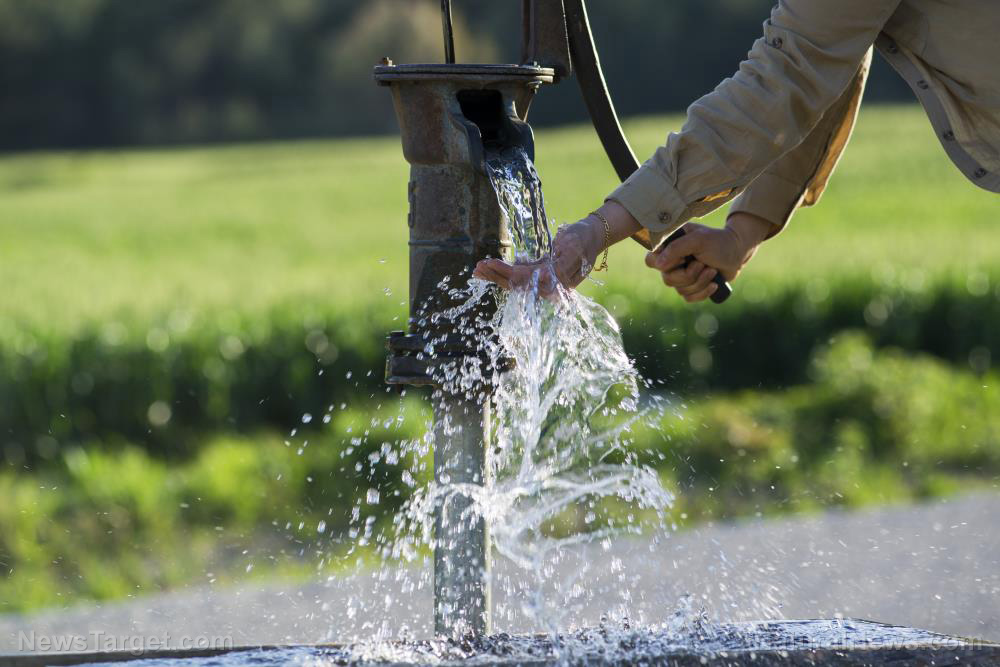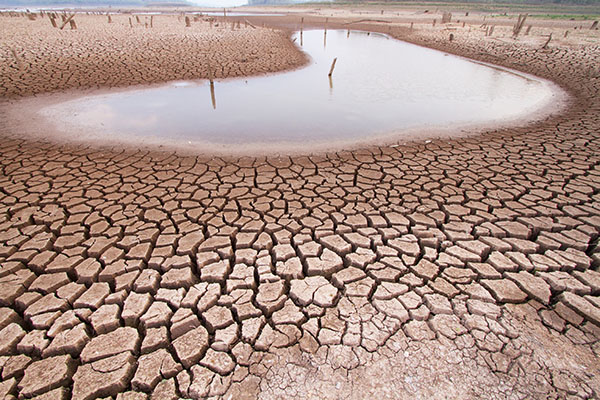
But if you are a prepper, you should know the importance of preparing before SHTF. (h/t to PrepperWebsite.com)
Why prepare for a long-term water supply interruption?
If your area often experiences water interruptions due to extreme heat or extreme cold that can cause a water main break, you may struggle to find water for cooking, cleaning and other chores.
But what will you do if one day you lose access to water for several days, weeks or even months?
To prepare for this scenario, make sure you have enough bottled water or potable water on hand so your family can stay hydrated when SHTF. The minimum recommendations say you should store at least one gallon of water per person and keep a three-day supply on hand.
If the climate is hot, you may need to double the water in your stockpile. Remember that the one gallon of water per person only accounts for water you need to drink, so get more water for washing, flushing the toilet, watering the garden or for your livestock, if you have any.
Additionally, you will need to add more water to your stockpile if you have a home garden with crops that need to be watered regularly.
During the first day or two without running water, you may find water in toilet tanks, water heaters and swimming pools. But once these emergency sources of water are depleted, you will need to find a more sustainable water supply.
Even if you find a water source, you need to make sure that you won't have to fight other people to access that water. To avoid confrontations that may get violent during a long-term water supply interruption, try to find another way to secure your emergency water supply.
Unless you plan ahead and prepare in advance, having enough water to take care of your garden and livestock in a long-term water emergency is going to be difficult. It might even be impossible in certain locations. (Related: Prepping tips: How to survive with a limited water supply.)
To make sure you don't run out of water when you need it most, here are some tips to help you prepare before a water supply interruption.
Install a well with a solar-powered pump
If you live in a rural area, it's a great idea to install a well so you have access to a reliable source of water. But what happens when you don't have electricity to operate the pump?
One way to solve this problem is to also get a solar-powered well pump. Before SHTF, invest in a pump so you don't have to get a generator and store extra fuel to be able to use your pump during a power outage.
If you have extra money, you can also get a generator so you have a backup in case you are unable to use your solar-powered well pump.
With a well and a solar-powered water pump, you will be able to provide water for your family and animals. You will also have enough water for your garden crops.
While this option costs more than the other ideas on this list, it's worth considering if you prefer a solution that offers the most reliable supply of water.
If you don’t have a well, consider the four strategies listed below. You can try them separately or together to ensure that your plants and animals survive even during a water interruption.
Simple strategies to try if your water supply is disrupted
One old-fashioned way to collect water is by using a condensation trap.
While this method of collecting water can help you get water for some animals or a small garden, you will need to set up a lot of condensation traps to harvest enough water for yourself and your family. You can use this method even in the desert.
Follow the steps below to learn how to set up a condensation trap on your homestead.
You will need:
- A black plastic garbage bag
- A clean water container, like an empty can or a cup
Steps:
Cut the black garbage bag along one side and across the bottom until you have a large flat sheet of black plastic.
Dig a hole in the ground about 12 inches smaller than the shortest side of your plastic sheet. This means if your plastic sheet measures 48 inches by 36 inches, the hole should be roughly 24 inches in diameter. The hole should be roughly 18 inches deep and have angled sides.
Place the can or cup in the center and bottom of the hole. Gather a bit of vegetation available in the area until you have enough to line the sides of the hole all the way around.
If you are in a desert environment, you can use cacti. Slice cacti or other thick-leafed vegetation to expose the moisture for efficient water collection.
Once the vegetation is in place, cover the hole with the black plastic sheet. Pull it tight all around and bury the edges. This will prevent air from escaping.
Lastly, place a small stone or a handful of sand in the center of the sheet to create a low point above the can.
Wait several hours while the sun heats up the interior of the hole and causes the moisture in the vegetation to evaporate. The water vapor will accumulate on the underside of the plastic sheet.
While it condenses, it will flow to the low point under the stone and drip into the container. On a very hot day, this method will produce about one cup of water every hour. To harvest more water, set up several of these traps.
If you are going camping or hiking, keep several large black plastic bags in your backpack so you can set up a trap or two when SHTF.
If it rains frequently in your area, learn how to harvest rainwater. But first, check local laws on rainwater collection so you don't get into any trouble.
If you have the budget for a good system, have your gutter feed into a storage tank. You can also save money by collecting water in receptacles like clean trash cans with lids or a swimming pool with a cover.
Make sure you keep the collected water in a covered container to prevent mosquitoes from using the water as a breeding ground. Covering the water you harvested will also prevent the evaporation of your water supply.
If you don't have gutters on your home, you can still use channels in your roof that divert water into a stream off the rooftop. Arrange containers underneath that area to catch the rainwater.
Another option you can try is to create swales to catch and keep rainwater in your garden.
Swales are water-harvesting ditches. However, unlike drainage ditches that cut across the contour of the land to speed water along, swales are built "on contour" to slow water down and sink it into the earth.
Swales built on contour will then collect water and help to recharge groundwater tables. They also help control erosion.
Check instructional videos on the internet to get help on how to layout and dig swales.
If you are in the midst of a water supply interruption, check neighborhood swales to find water for your garden and animals. Keep in mind that you need to build swales ahead of time so you can gather water when it rains and before the water supply is disrupted.
If you have a garden on your homestead, you can also read up on the principles of dryland farming to learn how to use the least amount of water necessary and keep the moisture in the soil longer. This means that when water is scarce, your garden will need less water.
This can be very helpful if you want to keep your crops alive during a water supply interruption, especially a long-term one.
Tim Miller of Millberg Farms in Kyle, Texas, is well-known in central Texas for his dryland farming. According to an article, Miller uses several techniques for dryland farming, like mulching heavily.
Miller also uses a lot of rotting wood chips in garden beds. He also relies on rainwater collection.
Another component of dryland farming is making use of drought-resistant, region-specific crops to ensure that your garden requires less water.
Before SHTF, make the necessary preparations so you can harvest enough water for your family, livestock and the crops in your garden.
Even if you don't have extra cash for a solar-powered pump and a well, you can set up barrels around your home to harvest rainwater. And if disaster doesn't strike, these options can also help you save on your water bill.
Watch the video below for tips on how to build a rainwater collection system.
This video is from the Prepping101 channel on Brighteon.com.
More related stories:
Water supply and prepping: A beginner’s guide to rainwater collection.
Water supply basics: How to use ponds as an emergency water source.
How to dig a well to secure your water supply before SHTF.
Sources include:
Please contact us for more information.























